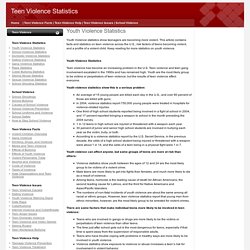

Les différentes formes de violences. LES VIOLENCES CONJUGALES REVÊTENT DES FORMES MULTIPLES QUI PERMETTENT À L’AGRESSEUR D’ADAPTER SES STRATÉGIES DE CONTRÔLE.

Les formes de violence qu’il utilisera peuvent se cumuler, s’imbriquer selon l’environnement et les réactions de sa partenaire. Ces violences sont sanctionnables par la loi et peuvent faire l’objet d’un certificat médical descriptif avec définition d’une Incapacité Temporaire de Travail. Ce document est essentiel dans le parcours judiciaire de la victime. www.vos-droits.justice.gouv.frwww.institutdevictimologie.frwww.fredetmarie.be Sont des violences insidieuses, permanentes qui causent des dégâts émotionnels importants, diminuent l’estime de soi et peuvent plonger la victime en état dépressif voire suicidaire. Il s’agit de violences asymétriques où l’agresseur estime que son comportement est justifié par l’incompétence ou le comportement (réel ou supposé) de sa compagne. Sont utilisées par l’agresseur pour contrôler, déstabiliser, humilier et détruire sa conjointe. Harcèlement à l'école. Youth Violence Statistics - Teen Violence Statistics.
Youth Violence statistics show teenagers are becoming more violent.

This article contains facts and statistics on teen violence across the U.S., risk factors of teens becoming violent, and a profile of a violent child. Keep reading for more statistics on youth violence. Youth Violence Statistics Teen violence has become an increasing problem in the U.S. Teen violence and teen gang involvement escalated in the 1990s and has remained high. Youth violence statistics show this is a serious problem: An average of 15 young people are killed each day in the U.S., and over 80 percent of those are killed with guns. Youth violence can affect anyone, but some groups of teens are more at risk than others: Violence statistics show youth between the ages of 12 and 24 are the most likely group to be victims of a violent crime.
There are some factors that make individual teens more likely to be involved in teen violence: There is no single profile for a violent youth. The Surprising Reason People Aren’t There for You. Violent Behavior in Children and Adolescents. Violent Behavior in Children and Adolescents No. 55; December 2015 There is a great concern about the incidence of violent behavior among children and adolescents.

This complex and troubling issue needs to be carefully understood by parents, teachers, and other adults. Children as young as preschoolers can show violent behavior. Parents and other adults who witness the behavior may be concerned, however, they often hope that the young child will "grow out of it. " Range of Violent Behavior Violent behavior in children and adolescents can include a wide range of behaviors: explosive temper tantrums, physical aggression,, fighting, threats or attempts to hurt others (including thoughts of wanting to kill others), use of weapons, cruelty toward animals, fire setting, intentional destruction of property and vandalism. Youthviolencefacts. Children's Exposure to Violence - Child Trends. Download Report In 2014, more than two-thirds of children (ages 17 and younger) were exposed to violence within the past year, either directly (as victims) or indirectly (as witnesses).[1] Importance Children are more likely to be exposed to violence and crime than adults are.[2] An experience of violence can lead to lasting physical, mental, and emotional harm, whether the child is a direct victim or a witness.

Children who are exposed to violence are more likely to suffer from attachment problems, regressive behavior, anxiety, and depression, and to have aggression and conduct problems. Other health-related problems, as well as academic and cognitive problems, delinquency, and involvement in the child welfare and juvenile justice systems, are also associated with experiences of violence.[3],[4],[5] Even community violence that children do not directly witness has been shown to affect negatively children’s attentional abilities[6]and cognitive performance.[7] Trends Differences by Age. La violence. Violence. Taux de violence physique pour 100 000 habitants par pays en 2002[1].

Pas de données Moins de 200 200-400 400-600 600-800 800-1000 1000-1200 1200-1400 1400-1600 1600-1800 1800-2000 2000-3000 Plus de 3000 La violence est l’utilisation de force ou de pouvoir, physique ou psychique, pour contraindre, dominer, tuer, détruire ou endommager. Elle implique des coups, des blessures, de la souffrance, ou encore la destruction de biens humains ou d'éléments naturels. Selon l'OMS[2], la violence est l'utilisation intentionnelle de la force physique, de menaces à l'encontre des autres ou de soi-même, contre un groupe ou une communauté, qui entraîne ou risque fortement d'entraîner un traumatisme, des dommages psychologiques, des problèmes de développement ou un décès.
La violence est observable chez les humains comme chez les animaux, ce qui indique sa signification évolutive et biologique[3]. Étymologie[modifier | modifier le code] St Louis - La Paix.